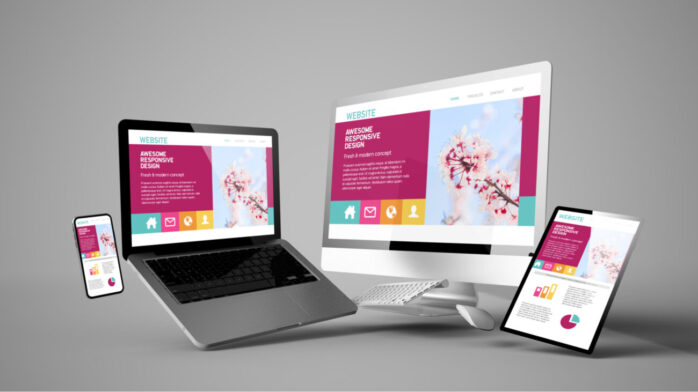
The digital age demands that businesses maintain a compelling online presence, and the cornerstone of this presence is an attractive website. A well-designed website does more than just display information; it transforms casual visitors into loyal clients. The essence lies in not just catching the eye of your audience but holding their attention and persuading them to act. This blog post explores the fundamental strategies to achieve that.
Define Your Target Audience
The first step in crafting a website that resonates is to know who you’re talking to. Understanding your target audience’s needs, preferences, and browsing behaviors is crucial. Tailor your website’s design, content, and user experience to match what appeals to them. When your website mirrors the expectations and desires of your audience, it significantly increases the chances of engagement and conversion. This strategy ensures that your website speaks directly to those you wish to attract, making them feel understood and valued.

Clear and Compelling Messaging
Your website must communicate its value proposition succinctly and effectively. Every word and image should serve a purpose, guiding visitors towards understanding what you offer and why it matters to them. Clear, direct messaging cuts through the noise, making it easier for potential clients to see the benefits of engaging with your business. A compelling narrative not only informs but also inspires action, making your website a powerful tool for conversion. This clarity and appeal should permeate every page, from your homepage to your contact form, ensuring a cohesive and persuasive experience throughout.
User-Friendly Navigation
Ease of navigation is non-negotiable for any website aiming to convert visitors into clients. A well-structured layout with intuitive navigation ensures that visitors find what they’re looking for without frustration. Logical grouping of information, a clear menu structure, and a search function can significantly enhance the user experience. When users can navigate your site effortlessly, they’re more likely to explore deeper, increasing their engagement and the likelihood of conversion. An accessible and straightforward navigational design fosters a positive user experience, encouraging visitors to stay longer and engage more deeply with your content. User friendly navigation comes from seamless web design (and if you’re looking for this service in Croatia try searching for izrada web stranica) so paying attention to who designs your website remains a crucial stance in this field.

Mobile Responsiveness
With the increasing use of smartphones and tablets for internet browsing, optimizing your website for mobile devices is essential. A mobile-responsive design adapts to different screen sizes, providing a seamless experience across all devices. This adaptability not only improves user satisfaction but also contributes to higher search engine rankings. Ensuring your website looks great and functions perfectly on mobile devices is key to capturing the vast mobile audience. Mobile optimization goes beyond aesthetics; it’s about ensuring fast loading times and easy interaction, whether it’s clicking a button or filling out a form.
High-Quality Visuals
Visual elements play a pivotal role in making your website attractive and engaging. High-quality images, videos, and graphics can capture attention, convey professionalism, and enhance your message. They break up text, making information more digestible and engaging. Investing in professional visuals is investing in your website’s ability to attract and hold visitors’ attention, a critical factor in conversion. These elements should not only be visually appealing but also relevant and aligned with your brand identity, ensuring a consistent and impactful visual narrative across your site.

Call-to-Action (CTA) Placement
Strategic placement of Call-to-Action (CTA) buttons guides visitors towards taking the next step. Whether it’s contacting you, making a purchase, or subscribing to a newsletter, CTAs should stand out and be placed where they naturally fit into the visitor’s journey. Effective CTAs are clear, compelling, and provide a sense of urgency, nudging visitors towards conversion without feeling intrusive. The key is to make these CTAs visible and enticing, using language that resonates with your audience and design elements that draw the eye, encouraging clicks and further engagement.
Testimonials and Social Proof
Incorporating testimonials, reviews, and other forms of social proof can significantly enhance credibility and trust. When potential clients see evidence of others’ positive experiences with your business, it reduces their hesitation and encourages them to take action. Displaying social proof prominently on your website leverages the persuasive power of word-of-mouth in the digital realm. This authenticity builds confidence in your offerings, making your site not just a source of information but a community of satisfied customers and endorsers.

Optimize Loading Speed
A slow-loading website is a major deterrent for visitors, leading to higher bounce rates and lost opportunities for conversion. Optimizing your website’s loading speed ensures that visitors have a smooth experience from the moment they arrive. This involves optimizing images, leveraging browser caching, and minimizing the use of heavy scripts. A fast-loading website respects the user’s time, contributing to a positive first impression. Quick access to information keeps users engaged, reducing frustration and encouraging them to explore your site further, which is essential for conversion.
SEO Optimization
Search Engine Optimization (SEO) is critical for increasing your website’s visibility and attracting organic traffic. Utilizing keywords, optimizing meta tags, and creating quality content are among the practices that improve your search engine ranking. A well-optimized website not only draws more visitors but also targets those with a genuine interest in your offerings, making conversion more likely. This strategic approach ensures that your site meets search engine guidelines and user expectations, leading to a symbiotic relationship between visibility and accessibility.

A/B Testing and Continuous Improvement
The digital landscape is ever-evolving, and so should your website. Regularly conducting A/B tests allows you to compare different versions of your website’s elements to see what works best. This process of continuous improvement helps in refining user experience, messaging, and visual appeal, ensuring your website remains effective in converting visitors into clients. By embracing a culture of testing and data-driven decision-making, you can stay ahead of user trends and technological advancements, continually optimizing your site to meet and exceed user expectations and business goals.
Conclusion
Creating an attractive website that converts requires a multifaceted approach, focusing on understanding your audience, clear messaging, user-friendly design, and continuous optimization. By applying these tips, you can enhance your website’s appeal, engage visitors effectively, and turn them into loyal clients. Remember, your website is often the first point of contact with potential customers, making its impact critical to your business’s success.











